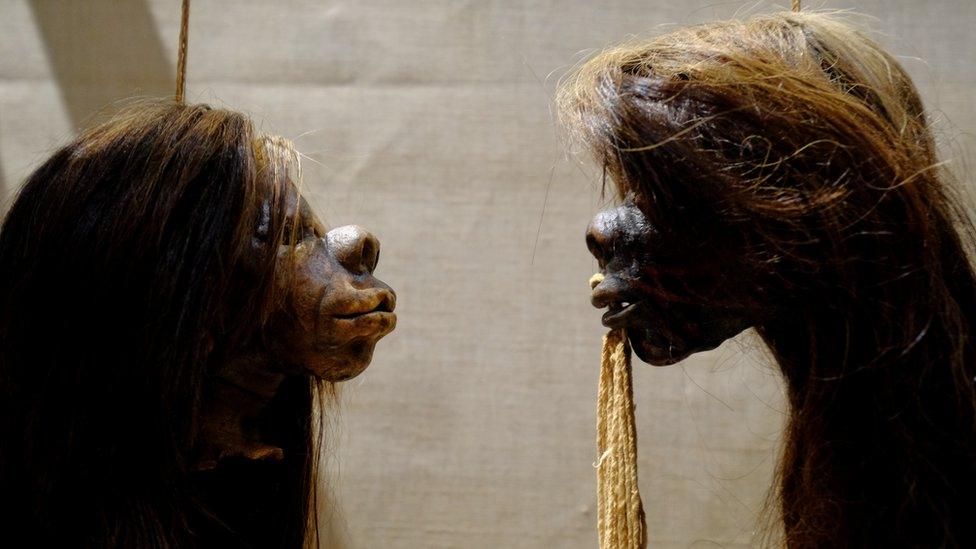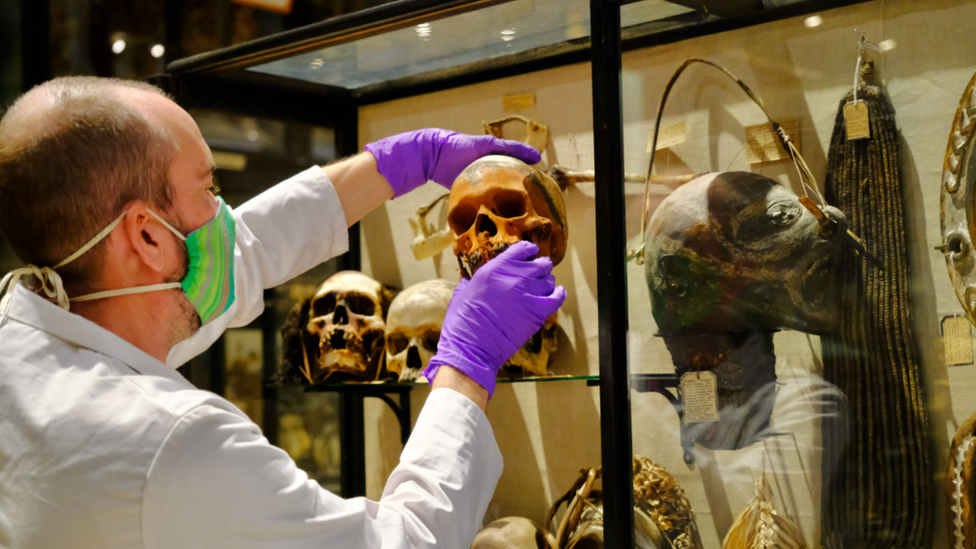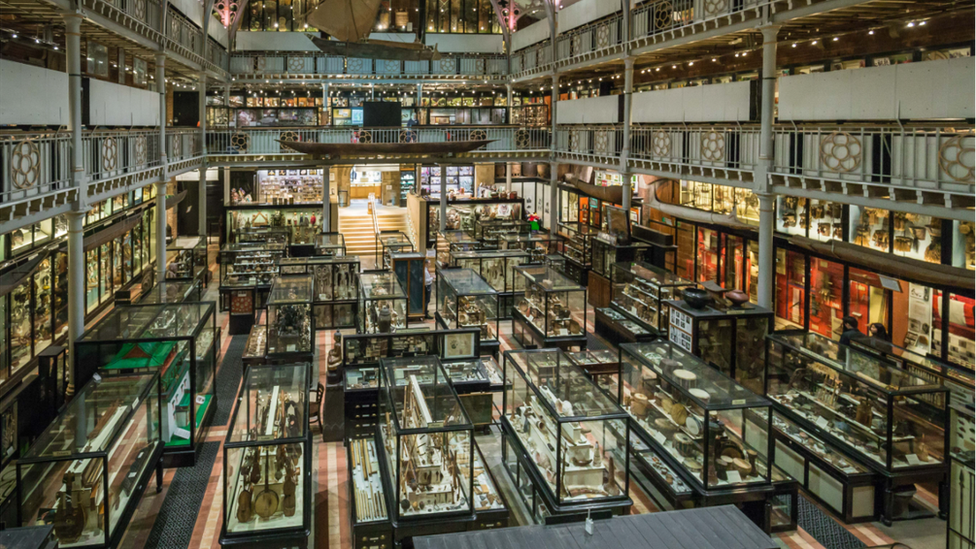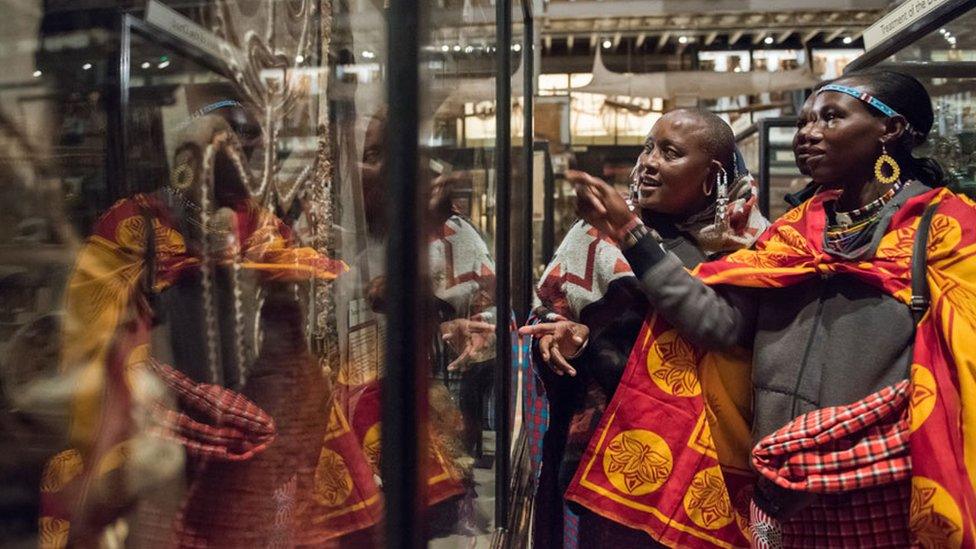Shrunken heads removed from Pitt Rivers Museum display
- Published

The Shuar tsantsa or shrunken heads have been removed from display in Oxford
Human remains, including shrunken heads, have been removed from a museum in Oxford as part of a "decolonisation process".
Following a review the Pitt Rivers Museum, part of the University of Oxford, removed 120 human remains.
The museum said visitors misunderstood the displays as being a testament to other cultures being "savage".
Director Laura Van Broekhoven said Pitt Rivers did not want to shy away from "difficult conversations".
The museum, which focuses on anthropology, ethnology and archaeology, took the decision as part of an internal review.
It said audience research showed the popular displays served to reiterate racist stereotypes.

What are the shrunken heads
The Shuar tsantsas or shrunken heads are from Ecuador and South America and were formed from human, sloth or monkey heads
They were much-sought after items by collectors who would pay one gun per head, leading to an increase in violent warfare locally at the height of 19th and 20th Century collecting
They were not "war trophies", rather genuine tsantsas were made in order to capture the power of one of the multiple souls that Shuar and Achuar people believed their men had. That power was used by the group to strengthen themselves and increase harvests
Pitts Rivers Museum acquired its collection of shrunken heads between 1884 and 1936
Indigenous people have long argued against the public display of their ancestors' remains
Source: The Pitt Rivers Museum

The human remains, including Naga trophy heads and an Egyptian mummy of a child, have been placed in storage.
Other reviewed objects on display included some that had historic labels with racist language used at the time, looted objects and those considered sacred by indigenous peoples.

The removed 120 human remains have been placed in storage
The museum founded in 1884 has 500,000 items, many "closely tied to British Imperial expansion" that were collected using violent means towards those being colonised.
"This difficult history has led the museum to engage more closely in acknowledging its past practices and the nature of its collecting, display and interpretation and the effects those have today," the museum said in a statement.

The museum has some 500,000 items, many of which are "closely tied to British Imperial expansion"
Ms Van Broekhoven said: "The implementation of the review is part of the museum's strategic plan to bring its public facing-spaces more in line with its contemporary ethos of actively working with communities and respecting different ways of being as we become a welcoming space for all."
New labels will feature and displays will include stories through the voices of artists and indigenous leaders.
Following its closure due to Covid-19, the museum is expected to reopen on 22 September.
- Published29 January 2019
